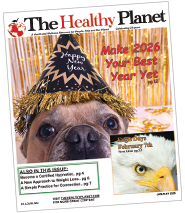
By Steffie Littlefield
Garden Heights Nursery
Many Gardeners find that feeding the birds is a rewarding and enjoyable hobby in the midst of chilly winter weather. Watching the wild birds feed and setting–up feeders is also a great family activity. These easy winter bird feeding tips can help you make the most of your feeders during the coldest months of the year.
Depending on the climate, geography and landscape of your backyard and your region of the country, you could be visited by dozens of different backyard bird species during the winter months. The most common winter birds include:
- House finches
- House sparrows
- Tufted titmice
- American goldfinches
- Downy woodpeckers
- Black-capped chickadees
- Northern cardinals
- Dark-eyed juncos
- American robins
- European starlings
To attract the greatest number of species in the winter, it is important to have a number of different birdfeeders available. While easy birdfeeders such as hopper and platform designs are always popular, the feeders you use during the winter should have several characteristics in common.
Cover: It is best if feeders have a wide cover over feeding ports, perches and dispensing trays so seed is not buried during snowfalls or storms.
Placement: Ideally, winter birdfeeders should be placed in sheltered locations out of the most severe winds. Placing feeders closer to the house will be effective and will make for better indoor birdwatching. At the same time, feeders should be placed near protective cover such as hedges to offer birds safety from predators.
Capacity: Large capacity feeders are preferred for winter feeding because they do not need to be refilled as frequently.
Cleanliness: Because natural food sources are scarcer in the winter, more birds may be attracted to backyard feeders and those feeders will need to be cleaned and sterilized regularly. When cleaning, discard soggy seed or seed encased in ice, and let the feeder dry before refilling if possible.
Most birds that visit backyards in snowy weather thrive on seeds, since insects and fruit are harder to find naturally during the winter. The best foods to offer birds in colder weather have a high fat or oil content that will provide abundant energy for winter survival. Nutritious winter foods for birds include:
- Black oil sunflower seed
- Hulled peanuts
- Niger seed
- Suet mixes with seeds or fruit
- Peanut butter
- White millet seed
When choosing birdseed and other foods for winter feeding, take into consideration which bird species are present in the winter and what foods they prefer to avoid excess wasted seed. Many birders also prefer to use no-waste seed mixes such as hulled sunflower seeds in the winter to avoid several months’ of hull accumulation beneath feeders in the spring. Good Brands to look for are Song Bird Essentials, Des Moines Audubon Brand Seed, and Black Oil Sunflower Seed by Wild Delight.
In urban areas one of the challenges for backyard bird feeders is the animal pests that can rob the feeders before the birds get to it. It is wise to incorporate some squirrel proofing with baffles or select a feeder that will protect the seed. The Audubon Absolute and mini-absolute feeders are well designed and the “Squirrel Buster” line are a patented squirrel proof design.
Another important element for your backyard feathered friends is a good source of water. One that will not freeze in winters low temperatures. This may mean a heater for your birdbath or backyard pond.
As the season changes and we look forward to spring, be ready to provide good nesting homes for your flock. In March, install sturdy and safe birdhouses. You will be continually rewarded with the wonder of nesting and the hatching of baby birds. This is sure to delight the whole family!
For more information please stop by or contact Garden Heights Nursery, 1605 S. Big Bend Blvd., Richmond Heights, MO 63117.
Call 314-645-7333 or visit online at www.gardenheights.com.


